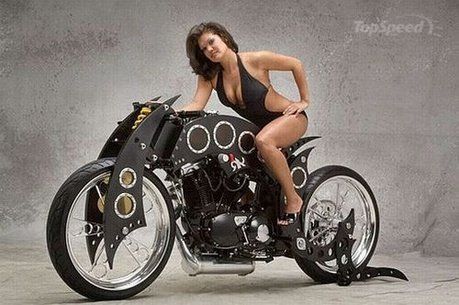Motorcycles are a popular means of transport today, especially of kawasaki kz200 and for those who crave a little danger in their lives, as they are great fun to own and ride. If you are considering getting a motorcycle for yourself, you will find the following tips useful.
Cost - Motorcycle prices vary from dealer to dealer depending on the brand and its specifications. Used motorcycles can be accessed at a cheaper price. However, it is advisable to first have a reliable mechanic evaluate the second-hand bike before you buy it.
Handling - A motorcycle's handling is mostly a matter of personal preference or rather what feels right for you. Here are some basic things to remember when choosing your bike.
• You should be able to have both feet touch the ground while seated on the bike
• The seat should be comfortable and big enough to fit two
• It should have foot rests that allow moving of the feet for added comfort
• You should be able to lift the bike easily in the event of tire changes
• The bike should start easily and without any smoking.
Helmet - Motorcycle helmets come in a variety of shapes and colors. Most dealers offer a free helmet for every motorcycle purchase, but you will want to buy a second one for your passenger as well. For maximum protection go for the full-face helmet that covers your entire head and also comes with a face shield to keep out flying debris and bugs. Some helmets have a venting system which will keep air flowing in and a quick switch face shield so you can easily switch from a clear to a tinted shield. Ensure that the fit is snug enough such that the helmet can not be turned when it's on your head.
Gear - Protective leather is the most highly recommended material for riding apparel as it is stronger, moderately flexible and much tougher than others. Protective leather for motorcycle gear such as jackets and pants is usually pre-tested for impact abrasion, cut, tear and burst resistance. The jacket is also usually fitted with heavy padding on the spine, elbow and shoulder regions to provide added protection in the event of an accident. Some gloves come with carbon fiber for knuckle protection, while boot heels are designed to fit on the bike's footrests so as to provide ankle support.
Maintenance - Regular maintenance and occasional servicing will ensure that your motorcycle remains safe for both you and your passengers. Ask the dealer's mechanic to teach you how to change the oil, filters and brakes. Learn how to lubricate the bike's chain and check fluid levels.
Riding with a passenger - It's advisable to have enough solo riding experience before carrying a pillion. When you're ready, try practicing in a low-traffic area with an experienced passenger weighing 50kg or less to get a feel for how a motorcycle handles with two people on it. Once you feel comfortable enough to take on a passenger, remember the following:
• If required, modify the suspension to handle the additional weight of your passenger and be sure to add the recommended amount of air to your tires.
• Give complete instructions before you start off even if your passenger is an experienced rider. To help communicate during the journey you may want to devise some signals beforehand such as a tap on the leg could mean "hold on tighter" or should your pillion need you to slow down, a firm squeeze around your middle can signal that.
• Always provide your passenger with a helmet.
• Raise the stand, securely brace the bike, start it and point it in the direction you want to go then have your passenger get on.
• Ask your passenger to sit as far forward as possible without crowding you. He should then hold tightly around your waist and stay directly behind you, leaning as you lean and avoiding any unnecessary motion that could affect your ability to safely control the motorcycle.
• Instruct your passenger to keep both feet on the footrests at all times.
• Adjust to the passenger's weight. Notice that the extra heaviness changes the way the motorcycle balances, turns, speeds up and slows down. Operate at a lower speed particularly on curves or bumps and start slowing down earlier than usual when approaching a stoplight.








No comments:
Post a Comment